TOURIST INFORMATION

Many large train stations
have tourist offices or
tourist-friendly travel agencies The Japan National Tourist Organization (JNTO) can furnish you with a vacation planner, information on specific areas, maps and lists of hotels and tour operators. A variety of guides and booklets are also available from the Tourist Information Centers (TIC).
In the New York: One Rockefeller Plaza, 630 5th Ave, Suite 1250, New York, NY 10111, ☎ (212)-757-5640, fax: 212-307-6754. In Los Angeles: 624 S. Grand Ave., Suite 1611, Los Angeles CA 90017, ☎ (213)-623-1952. There are also offices in Chicago, Dallas and San Francisco. In Toronto: 165 University Ave., Toronto ONT M5H 3BH, ☎ (416)-366-7140. In the UK: 167 Regent St., London W1, ☎ (071)-734-9638. In Australia: 115 Pitt St., Sydney NSW 2000, ☎ (02)-232-4522.
In Japan: 10th Floor, Tokyo Kotsu Kaikan Building, 2-10-1Yurakucho, Chiyoda-ku, Tokyo 100-0006, ☎ (03)-3201-3331, Fax: (03)-3201-3347, English Teletourist Service-(03)-3503-2911; JNTO Website: JNTO or Japan Travel ; Visit Japan Campaign: Visit Japan Campaign Other Websites: Japan-Guide.Com Japan-Guide.Com; Web Japan Web Japan or Web Japan
Tourist Offices in Japan: There are generally local tourist offices in places visited by foreigners. They are generally located in and around the train station. The offices and signs directing one to the offices are usually easily identifiable.
Theses offices provide help getting accommodation as well as tourist information an schedules for buses, trains ad public transportation. They can you also give direction to sights, help you choose a restaurant and find a hotel. The offices are generally open from 9:00am to 5:00pm Monday through Friday and 10:00am to 12 noon on Saturday. In the summer some offices are open in the evening and on Sunday.In Hokkaido and Kyoto and some other places interpreter-guides are available. Many small cities and towns provide volunteer English-speaking tourist guides through municipal tourist bureaus.
Traveler bulletin board:Lonely Planet’s Thorn Tree Lonely Planet’s Thorn Tree planet.com ) and Travellerspoint (Travellerspoint ).
TRAVEL DOCUMENTS IN JAPAN
A passport valid for at least six months after arrival is required. A visa is not required for stays up to three months for citizens of the United States, Canada and most West European countries (British, German, Austrian, Irish, Swiss and Mexican passport holders get six months) and Singapore, Hong Kong and Brunei. Australians need a visa. Thee are plans to make South Koreans and Taiwanese exempt from visas. For more information check the Travel Document Systems Web site Traveldocs
Since November 2007, foreign visitors to Japan have been required to be fingerprinted and photographed as part of Japan’s effort to screen potential terrorists. The only country to have such procedure before that time was the United States Human and civil rights groups n Japan objected to the procedures.
U.S. Embassy in Japan: Tameike Tokyu Bldg., 1-14, Akasaka 1-chome, Minato-ku, Tokyo 107, ☎ [81]-(3)-3224-5115, telex: J29180, fax: [81]-(3)-3582-6429. There are also consulates in Osaka and Fukuoka. Japanese Embassy in the United States: 2530 Massachusetts Ave. NW, Washington DC 20008, ☎ (202)-939-6700, fax: (202)-328-2187.
Visas: If you want to work, study or do business in Japan you will most likely need a visa and these visas generally require sponsorship of a person, institution or company in Japan. To get one generally you have to submit the following to a Japanese embassy or consulate: 1) a valid passport; 2) filled out copies of the application form; 3) several passport-size photos; and 4) a round-trip plane or evidence of purchase thereof; and 5) relevant documents from the place which you wish to study, work or do business. For information on work permits, business visas, student visas and immigration contact a Japanese embassy or consulates.
Lost Passport: Make sure to make photocopies of your passport and visa. If your passport or visa is lost or stolen you generally have to report the theft to police before you can get a new one. Embassies on consulates can give you advise on what you have to do.
A Round-Trip or Onward Ticket is generally not required. Proof of Sufficient Funds is generally not, but may be, required. Departure Tax: Varies from airport to airport but is generally around $20. Inoculation Records are not required unless you coming from an area in tropical Africa or South America infected with yellow fever. See "Health." Customs: 400 cigarettes and 3 bottles of liquor and gifts that don't exceed US$2000 are allowed. Taking in Expensive Electronic Equipment (like video cameras and laptop computers) See Appendix III:

10,000 yen banknote
MONEY IN JAPAN
Japan is a very expensive and cash-oriented country. Bring cash and travelers checks and don't expect to use credit cards everywhere. The currency of Japan is the yen (¥).
Most things — like first class hotels and fancy restaurants — are comparable in price to their equivalent in Europe or the United States. Other things — uch as restaurant food, beer, gasoline and transportation — are considerably more expensive.
Backpackers can live on around $50 a day. There isn’t much guest house accommodation but there are $20-a-night hostels and $30-a-night capsule hotels and lunch deals for between $5 and $10. Rooms in tourist hotels go for between $40 and $60. Doubles in a five-star hotel generally go for between $150 and $200.
Denominations: There are 1, 5, 10, 50, 100 and 500 yen coins and 1000, 5000 and 10,000 yen bank notes. Exchange Rates: (September 2009) 1 Dollar= 93 yen. 1 yen = about 1.1 U.S. cent. Inflation Rate (annually from 2000-2009): about 1.5 percent. Per Capita GNP (2006) US$34,252.
Latest Exchange Rates: Oanda Oanda ; Xe.com XE
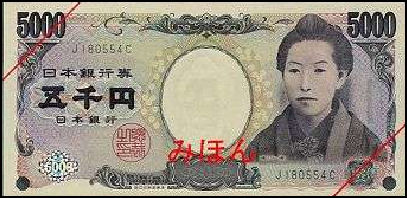
5,000 yen banknote
Where to Change Money: Money can be changed at banks, airport banks, and hotels. Most people change their money at the airport (the rates are usually good there) and banks (the rates are usually pretty much the same from bank to bank). Banks open at 9:00am but they don't begin exchanging foreign currency until 10:30 or 11:00am and stop at closing time at 3:00pm. The rates at hotels are generally the not very good and many hotels don't exchange foreign currency.
As a rule don’t change money in your home country. Wait and change it after you arrive in the country you are traveling in. The exchange rates are usually better there. Also change money back into local currency in the country in your traveling; don’t change it back in your home country. In Japan, you generally need your passport when you exchange money.
ATMs: Some foreigners in Japan have difficulty withdrawing money from ATMs and gaining access to foreign accounts. Many ATM.s in Japan require users to have an account at a bank in Japan. Your best bet is to use a Citibank office. Most post offices in places frequented by tourist have A.T.M.s that accept foreign credit cards using Cirus or Plus networks. It is good idea, though, to bring some travelers checks as a back up.
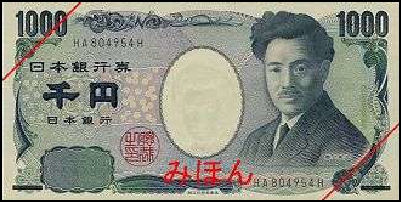
1,000 yen banknote
International credit cards and ATM cards will work in places that accept them as long as they have a four-digit PIN number encoded. Check with you bank for details on using foreign ATMs before leaving home. Also remember many foreign ATM keypads have only numbers and not the letters that correspond to them. Make sure to memorize your PIN by the numbers. ATM Locator Web sites: Mastercard: Mastercard
Travelers Checks can be exchanged for Japanese currency at most banks. Rates given for travelers checks are often slightly higher than those given for cash. It is a good idea to bring some small denomination travelers checks in case you need a small amount of money in a squeeze. American Express travelers checks are the most widely accepted ones. You generally can not use U.S. dollar travelers checks or travelers checks in yen to buy stuff though.
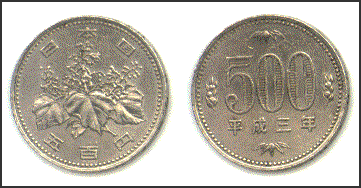
500 yen coins Credit Cards are used in Japan but are not nearly as popular as in the United States. Some places that accept credit cards make it a hassle to use to use them. They are generally accepted at major hotels, stores, shops that cater to tourists, restaurants, airlines, trains, car rental agencies, and many other businesses. Visa, Mastercard and American Express are the most widely accepted credit cards. Some cards can be used to get cash from ATM machines.
Alert your credit card company that you are traveling abroad so you can prevent your account from being frozen for “abnormal” use. Carry a couple credit cards with you — preferably in separate places — in case one is stolen or lost.
Credit cards are good for the purchases of big ticket items. Visa and MasterCard cards generally charge a one percent currency conversion fee on purchases made overseas (in addition some banks will charge an additional two or three percent). In return the credit card companies will protect you against unauthorized charges, billing errors and misrepresentation with proper documentation. Bank Hours: See Facts. Wiring Money: See Appendix VI.
Student Discounts are offered at some tourist places and museums. International Student Identification Cards are available. See the Lonely Planet guides for information.
Tipping is not practiced and is often considered an insult. Taxi drivers, waiters and hotel porters don't expect a tip. Sometimes tips or gifts are given to tour guides and hotel personnel that have been especially helpful. Bargaining isn't practiced either.

100 yen coins Hotels and Restaurants: There is 6 percent hotel tax. A service fee is added on top of that at some upscale hotels and restaurant, bringing the total tax and service charge to around 10 percent of the total bill.
Tax: 5 percent consumption tax (same as sales tax or VAT), 6 percent hotel tax. The rate increases to 10 percent is levied at restaurants if a lot of money is spent. There is no refund system for tourists.
Money Warnings: 1) Fake ¥10,000 bills have been found in Hokkaido and Gunma Prefecture; 2) Make sure you have enough cash for the airport tax at the end of the trip.
HEALTH IN JAPAN
Healthwise, Japan is generally clean and safe and few visitors have health problems there. Inoculations: No vaccinations are required, but it may be worthwhile to get a vaccination for Japanese encephalitis, a mosquito-borne disease that is very rare but found in Japan, especially in the south in the summer. Sun Protection: Make sure you use a sun screen rated "15" or above if you are going to be outside a lot. Sun glasses, protection for your lips, a hat and long sleeve shirt are also a good idea. Insect Protection: Mosquitos and other insects can be a nuisance but they generally don’t carry any diseases. If you are going to be in the wilderness wear protective clothing. Use a spray like "Coulston's Duranon Tick Repellent" on your clothes. Use a 95 percent to 100 percent DEET insect repellents on your skin. Food and Water: The tap water is safe to drink. Few visitors have stomach- and bowel-related problems with the food in Japan.
Medical Facilities in Japan are among the best in the world. Larger hotels often have a list of doctors that are on call for visitors. Insurance and Payment: Visitors to Japan with insurance in their home country are entitled to health care under the country's national health insurance program. Visitors are advised to bring copies of their insurance forms. Payment must generally be worked out with doctors, pharmacist ad the hospital as well the national health insurance program. Patients without papers are technically required to pay the bill after treatment.
To be on the safe side check with your medical insurance company to make sure you are covered overseas. Payment in cash is usually required after treatment in local hospitals and clinics. Sometimes credit cards are accepted. See Appendix III for a list of Travel Insurance companies.
For More Information call check with Center for Disease Control in Atlanta CDC , tel. (404)-332-4559, 4555).
English-Speaking Doctors: You can gain access to a worldwide list of recommended English-speaking, Western-trained doctors 24 hours a day by contacting the International Association for Medical Assistance for Travelers (IAMAT, IAMAT , 417 Center Street, Lewistown NY 14092, tel. (716)-754-4883. IAMAT is a non-profit organization. Membership is required. The service is free. You can also contact the U.S. Embassy or consulates in Japan.
Medical Assistance you can try MEDEX MEDEX tel. 800-537-2029), the International SOS Web site (a travel insurance company, International SOS ;MedicAlert MedicAlert tel.888-633-428).
International SOS is a company that offers a wide range of health assistance services including access to SOS medical clinics, 24 hour numbers for medical information and assistance, health alerts, help finding qualified doctors and dentists, and interpreter services. Founded in 1974, it has 44 offices around the world and a staff of 2,600, including 250 doctors. Membership costs about US$400 a year.
BOOKS AND MAPS IN JAPAN
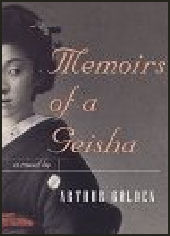
Most people who travel in Japan buy a guidebook for Japan or East Asia. Numerous travel book publishers have released guidebooks on Japan. There is also a wide selection of guidebooks for Southeast Asia that have Indonesia sections. There is also a variety of books dealing with different regions or different subjects and themes such as art, history, religion and food.
Vacation Travelers should check out the Frommer’s and Fodor’s Guide. The Blue Guides are good for culture and history. High End travelers might want to consider the Michelin Guides. The first Michelin Green Guide for Japan was published in 2009 with 56 places, including Mt. Fuji and Kinkakuji temple in Kyoto, given three starts for being “worth a trip.” A restaurant guide for Tokyo has also been published.
Budget Travelers: “The Japan Travel Survival Kit” and “East Asia on a Shoestring”by Lonely Planet. These readable guides have good maps, tips and lists of cheap accommodation and restaurants as well as good cultural information, maps, photos and descriptions of the sights. “The Rough Guide to Japan” has considerably better maps than the Lonely Planet Guide.
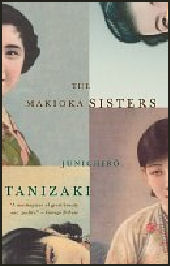
Pleasure Reading: “Inland Sea” by Donald Richie (Weatherhill); “Shogun” by James Clavell (Dell, 1975); “Memoirs of a Geisha” by Arthur Golden (Vintage, 1999); “The Golden Pavilion” by Yukio Mishima (Vintage, 1994); “The Makioka Sisters” by Junichiro Tanizaki (Vintage, 1995); “Empire of Signs” by Roland Barthe (Noonday, 1983); “The Roads to Sata” by Alan Booth (Penguin).
Classic books on the Japanese character and society include “The Chrysanthemum and Sword” by Ruth Benedict; “Vertical Society” by Chie Nakane; “Bushido” by Inazo Nitobe; and “The Japanese” by Edwin O. Reischauer (Belknap Press).
Maps: JNTO JNTO or JNTO No. 2 ; Lonely Planet Lonely Planet ; Perry-Castaneda Mapp Collection , University of Texas ; Maps.com Maps.com ; Google Maps Google Maps
TELEPHONES IN JAPAN
The telephone system in Japan is excellent; public telephones are found virtually everywhere; and most of them use phone cards. You must dial the area code when making long distance calls in Japan. Local calls generally do not require an area code. Most numbers have seven or eight digits. Japanese answer the phone by saying "Moshi Moshi." Cell phones are very popular in Japan. They can be rented in some places.

public telephone English Information Service can be dialed at 3277-1010, Mon-Fri 9:00pm to 5:00pm and Sat. from 9:00pm to 12:00 noon. NTT English information service (toll-free): ☎ 0120-364-463, weekdays, 9:00am to 5:00pm. International phone calls (toll free information): IDC: ☎ 0120-03-0061; Japan Telecom: 0088-41; KDD 0057.
International Calls and long distance calls can be dialed direct from homes, businesses or phone booths. Due to concerns about telephone card fraud only some public phones allow international calls to be made and they often have a time or money limit. Try to avoid making calls from hotels, which often add a considerable surcharge.
All public phones but the coin only phones can make operator assisted international calls. Direct overseas call have to made from an "International & Domestic Card/Coin Telephone," which are found at Narita Airport, and also at some hotels and some major office centers. International calls are generally made from grey IDD phones. You generally need KDD Superworld Cards.
Prepaid calling cards are good for calling home and making international calls because the card’s limit will prevent you from talking longer and spending more money than you anticipated.
From the United States to Japan: The country code is [81]. The city code for Tokyo is (3). To call Tokyo you would dial 011-[81]-(3) then the number. From Japan to the United States: To make a long distance telephone call first dial the international dialing code (001, 0041 or 0061), then the country code, the area code, and then the number. ATT United States Direct is 0039-111. Collect calls, station-to-station, person-to-person can made by dialing the ATT number listed above. These calls are very expensive.
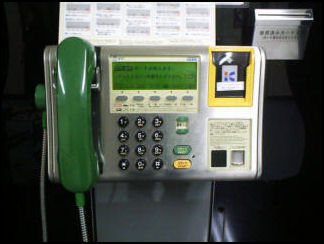
public telephone Public Telephones can be found in restaurants, train stations, hotels, post offices and on the streets. There are not as many of them as there used to be because so many Japanese use cell phones.
There are four kinds of public telephones found in Japan. Green telephones use cards only; yellow and green phones accept both 10 and 100 yen coins; and red ones accept 10 yen coins only. A local call cost 10 yen for three minutes. If you here a buzzing sound that means you must insert more coins or a telephone card.
To use a card phone 1) pick up the receiver; 2) insert the card (if it is a toll free number you can dial without putting in a card); 3) close the flap; 4) when the number of call units you have left appears on a screen dial number; 5) when the call is finished take out your card.
All public phones can be used to make local calls. Phone cards (usually in 500 or 1000 yen denominations) can be purchased at post offices, or from vending machines and local vendors near the phones.
Internet Cafes: There are not many Internet cafes because most people have computers in their homes. Many hotels have computers their customers can use. Telexes can be made by calling 115 between 8:00am and 10:00pm. Faxes can often be sent from convenience stores. Emergency Numbers: Police: 110, in English 03-3212-2323 (3501-0110); fire ambulance 119, in English 03-3264-4347. Medical interpretations: ☎ (03)-5285-8181, weekdays 5:00am to 10:00pm, weekdays and national holidays, 9:00am to 10:00pm. Japan Helpline: (0120)-46-1997.
POST OFFICES IN JAPAN
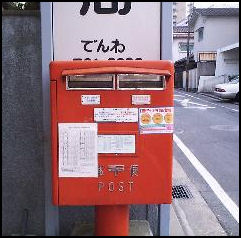
letter-mailing box Japan Post is a public corporation created in April 2003 to take over the duties of the Postal Service Agency. The Japanese postal service generally offers excellent service. The best place to have mail sent to you if you are traveling is an American Express Office. Letters sent out of Japan can be mailed at a post office or dropped in a red mailbox. A customs form must be filled out for packages leaving the country. Stamps are available at post offices, some newspaper stands and hotels.
Post Office Hours: See "Time Facts." Mail to Japan from the United States: 50 cents first 1/2 ounce. From Japan to Other Countries: Postcards are 70 yen, aerogram are 80 yen and letters up to 1/3 of an ounce are 80 yen to Asia, 100 yen to Oceania, North America and the Middle East and 120 yen to Europe, Africa and South America. Within Japan: 62 yen an ounce for letters. 75 cents of a first class domestic letter.
Shipping: DHL, UPS and Federal Express offer good service in Japan from the United States. Many people who purchase gifts in Japan have them shipped by the buyer. Air freight is expensive but takes only a week or so to arrive. Surface freight is cheaper but takes two or so months to arrive.
When shipping obtain a shipping agreement in writing that states insurance fees, the total shipping fees, method of shipment, carrier, and port of entry in the U.S. Most likely you will have to make your own arrangements in the U.S. to get the items shipped from the port of entry to your home.
ELECTRICITY IN JAPAN
The electric current in Japan is 100 volts (more or less the same as 110 volts, the voltage in the United States). Eastern Japan, which includes Tokyo, has a 50 cycle current (different from the United States) and western Japan, which includes Osaka, Kyoto and Nagoya, has 60 cycle current (same as the United States). Nearly all electronic items that work in the United States work fine Japan.
Most sockets and plugs found in Japan include the flat blade attachment plug and the flat blade plug with a grounding pin (both found in the United States). Less common are the oblique flat blade plug with a flat blade ground (not found in the United States). For information about transformers and adapters see "Appendix II: Electricity" at the end of this guide.
TIME FACTS IN JAPAN
Times are expressed both with a 24 hour clock and with a.m and p.m. The opening and closing times of shops, businesses and offices are generally the same as those in the United States. There are less offices open on Saturday than there used to be. As a rule events are held earlier than their counterparts in the United States and Europe. Concerts, baseball games and other sports events for instance often begin around 6:00 or 7:00pm and finish by 11:00pm so people can take the subway home.
Business Hours: 9:00am to 5:00pm, Monday through Friday, some are open from 9:00am to 1:00pm on Saturday. Government Hours: 9:00am to 5:00pm, Monday through Friday.
Store Hours: 10:00am to 6:00pm, 6:30pm, 7:00pm or 8:00pm. Stores are usually open on the weekends and most holidays (but sometimes are closed one weekday a week, this day varies from store to store). Bank Hours: Even though banks open at 9:00am, foreign currency is usually only exchanged between 10:30 or 11:00am and 3:00pm (closing time). Post Office Hours: 9:00pm to 5:00pm Monday through Friday and 9:00pm to 1:00pm on Saturday. Closed on Sundays. Large city post offices have longer daily hours. Some are open on Sundays.
Restaurant Hours: 11:00pm to around 9:00pm. Lunch is generally eaten between 12:00 noon and 2:00pm and dinner is generally eaten between 6:00pm and 8:00pm. Nightclubs and Discos generally close around 2:00pm, but some stay open late into the night. Tokyo nightclubs are required to close at 1:00am. In recent years some have sought permission to stay open until dawn.
Museums are generally open from 9:00am or 10:00am to 5:00pm. They are generally open on Sundays and holidays but closed on Mondays or another weekday. Times may vary so check with local tourist offices for specific information.
Time Difference: +14 hours from New York. When it is 7:00am in New York it is 9:00pm in Tokyo. +9 hours from London (Greenwich Mean Time). When it is 7:00am in London it is 4:00pm in Tokyo. Korea and Japan have the same time zone. China is one hour earlier. Web site: Time and Date
Daylight Savings Time — which begins in early April and ends in late October or early November in the United States — is not observed in Japan, which means there is a +13 hour difference with New York and +8 hour with London from the end of April to the end of October. Japan is one of the last developed countries that has not adopted daylight savings time. In June, the sun rises at 4:30am in Tokyo and sets around 7:00pm.
Many Japanese don't want to switch to daylight savings time. One government survey found that 18.8 percent oppose because "the rhythm of their lives would change: and 10.8 percent opposed it because they worried they would have less time to sleep.
Whether or not to have daylight savings time has been a hotly debated topic. In 2004 a group of companies in Hokkaido experimented with it and found that most employees enjoyed the extra daylight in the evening and were more likely to go shopping and spend money, which in turn helped the local economy.
TRAVEL WARNING IN JAPAN

Asian toilet Crime: Japan has one of the world's lowest crime rates. Even in bad neighborhoods people walk around without fear. Jewelry stores and other shops have relatively light security. People carry around large amounts of cash. Violent crime is rare. But even so petty theft and other crimes do occur. Crime is increasing among juveniles. Be on the alert for gangs of teenage boys. They sometimes make trouble.
To be on the safe side keep valuables, money, passport, and credit cards in a safe place. Don’t take unnecessary valuables with you. Bring modest clothing and things that won’t break your heart if they are stolen or lost. It is also a good idea to make photocopies of your passport, airplane ticket and travelers checks receipts. Keep one set with you in a different place from your originals and another set at home. Another idea is scanning you passport, driver’s license and credit cards and sending the files to your own e-mail address. That way if they get stolen you can access them anywhere there is a computer and Internet connection.
Problems Faced by Foreign Travelers in Japan: Foreign travelers are mainly put off by how expensive Japan is. A brief trip to Mt. Fuji from Tokyo can coast as much as $400 and simple lunch at a restaurant over $30. But Japan is much less expensive than it used to be. Many foreign tourists also find Japan to be too complicated to figure out. Many are also intimidated by the language barrier and fears about etiquette faux pax.
Some owners of traditional Japanese inns do not disguise the fact they prefer Japanese customers to foreign ones. Information in English and other languages is often hard to come by even in a place like Tokyo Station. The main tourist office in Tokyo has a wealth of information but is impossibly hard to find.
Clothing: Men and women should dress modestly as a matter courtesy. It is a good idea to bring loafers or shoes that you can take off and put one easily. Also make sure your socks don’t have holes in them. Warning to Women: Japanese men generally don't hassle women. Smoking is common in some restaurants.
Buddhist Temple Customs: People are supposed to take off their shoes before entering a temple and leave umbrellas outside. They are also expected to be neatly dressed. Hats should be removed. Short sleeve shirts, short pants, short skirts and pants for women are generally regarded as inappropriate attire but are often grudgingly tolerated from foreigners. Some cultures require visitors to take off their shoes (and sometimes their socks) when entering the temple grounds. Others only require that they be removed when entering a temple building, shrine or pagoda. Some people wash their feet before entering a temple.
Always walk clockwise around Buddhist monuments, thus keeping the religious landmarks to your right (this is more important in Tibet and Himalaya areas than it is in Southeast Asia, China and Japan) Don't walk in front of praying people. Don’t take photos during prayers or meditation sessions. Don’t use a flash. As a rule don’t take photos unless you are sure it is okay.
Buddha images are sacred object and one should not pose in front of them or point their feet at them. When sitting down many local people employ the “mermaid pose” to keep both feet pointed towards the rear. Photographing Buddha images is considered disrespectful, but again, is tolerated from foreign tourists.
Praying is done by prostrating oneself or bowing with hands clasped to their foreheads from a standing or seated position in front of an image of Buddha. Prayers are often made after tossing a coin or banknote into an offering box and leaving an offering of flowers or fruits or something else. Many people visit different altars, leaving some burning incense and praying at each one. Other bow at the altar and sprinkle water, a symbol of life. Other still, kowtow before shrines, bend down and stretch three times. In big temples money can be left in a donation boxes near the entrance. If there is no donation box. You can leave the money on the floor.
Toilets are relatively easy to find in Japan. Public toilets are found in parks, subway stations, recreation areas, department stores, hotels, restaurants, Metro and train stations. McDonald's is a good place to go in an emergency. Some cafes will let you use their toilet even if you don't buy anything. Many rest rooms have the words "men" and "women" written on them. Other are color-coded with pink for women and blue for men. Some have Japanese symbols for men and women. Others have a locked door and are used by both sexes. Bring along a handkerchief and tissue and paper wipes. Many don't have paper towels and restaurants don't have napkins. A surprising number of rest rooms have toilet paper but bring along some in case they don’t. Public toilets in parks tend to be Asian squat-style ones. Ones in restaurant and shopping areas are more likely to be Western-style
Other Warnings: 1) One should not swim in fountains, sunbathe half-naked in the parks, have picnic on museums steps, or chew gum in museums, temples and shrines. 2) Signs are often not in English. 3) Opening and closing times and closed days of museums — and shops — varies quite a bit from place to place. Check with the tourist office for up-to-date listings.
4) Watch out for bicycles on the sidewalks. Many Japanese and foreign travelers to Japan complain about the dangers presented by bicycles on the sidewalks. Many people, especially elderly ones, have ended up in the hospital with broken bones due to fast and reckless sidewalk bicycle riders. 5) people authorize documents with a chop (hanko) rather than a signature. 6) VCR and video cameras use the American NTSC standard. If you use the PAL or SECAM video systems bring your own video cassettes.
7) Some traditional Japanese inns, public baths and places are not very welcoming to foreign visitors. This is not necessarily because they are prejudice against foreigners but more often because they worry that foreigner will not follow the proper etiquette and they might argue over the bill because they are not familiar with the Japanese pricing system.
8) Museum and temple entrance fees can be very steep are especially annoying if you visit a lot places in one day. Visitors must endure agonizingly long lines to get in to popular exhibits, particularly during weekends and holidays. Sometimes the exhibits are surprisingly small.
Measurements and Dates: Japan, like most countries in the world, uses the metric system to measure distances and quantities and the centigrade system to measure temperature. Japanese clothing and shoe sizes are different from American and European sizes.
Japanese use the 24 hour clock (i.e 20:00 instead of 8:00pm) and the a.m and p.m. system. They also write their dates different, with the year preceding the month and day. April 23, 1999 is 99/23/4 not 4/23/99 as Americans write it.
Travel Advisories U.S. State Department Advisories: tel. (202)-647-5225; Fax: (202)-647-3000; Electronic bulletin board: (202)-647-9225. Web site: Travel.State.gov British travel warnings: fco.gov.uk . Australian travel warnings: dfat.gov.au/travel .
Travel Advise Web sites: Lonely Planet Lonely Planet Lonely Planet’s Thorn Tree Thorn Tree
Image Sources: 1) Ray Kinnane 2) 3) 4) bigglobe.com 5) 6) Amazon 7) 8) 9) 10) Rob's Photo gallery, the japan faq
Text Sources: New York Times, Washington Post, Los Angeles Times, Daily Yomiuri, Times of London, Japan National Tourist Organization (JNTO), National Geographic, The New Yorker, Time, Newsweek, Reuters, AP, Lonely Planet Guides, Compton’s Encyclopedia and various books and other publications.
